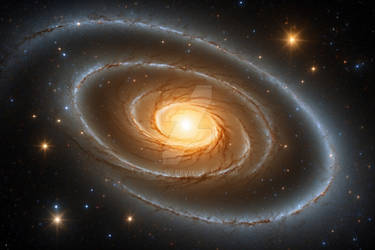Deviation Actions
Description
The Cone, The Rosette, Barnard's Loop and The Great Orion Nebulae.
There is quite a lot in shot for this one!
From left to right, The Nebulae:
The Cone Nebula
The Rosette Nebula
Barnard's Loop
The Flame and Horse Head Nebula
The Great Orion and Running Man Nebulae
The Stars:
Top middle, large Orange star - Betelgeuse
Top right, Blue star - Bellatrix
Lower right, Orion's Belt, from left to right Alnitak, Alnilam and Mintaka
Top left is the Christmas Tree cluster and deep within is the little Cone nebula, the Rosette is just below
The Cone Nebula is an H II region in the constellation of Monoceros. It was discovered by William Herschel on December 26, 1785. The nebula is located about 2,700 light-years away from Earth. The Cone Nebula forms part of the nebulosity surrounding the Christmas Tree Cluster. The designation of NGC 2264 in the New General Catalogue refers to both objects and not the nebula alone. The diffuse Cone Nebula, so named because of its apparent shape, lies in the southern part of NGC 2264, the northern part being the magnitude-3.9 Christmas Tree Cluster. It is in the northern part of Monoceros, just north of the midpoint of a line from Procyon to Betelgeuse.
The cone's shape comes from a dark absorption nebula consisting of cold molecular hydrogen and dust in front of a faint emission nebula containing hydrogen ionized by S Monocerotis, the brightest star of NGC 2264. The faint nebula is approximately seven light-years long (with an apparent length of 10 arcminutes), and is 2,700 light-years away from Earth. The nebula is part of a much larger star-forming complex.
The Rosette Nebula (also known as Caldwell 49) is a large, circular H II region located near one end of a giant molecular cloud in the Monoceros region of the Milky Way Galaxy. The open cluster NGC 2244 (Caldwell 50) is closely associated with the nebulosity, the stars of the cluster having been formed from the nebula's matter. The cluster and nebula lie at a distance of some 5,200 light-years from Earth and measures roughly 130 light years in diameter.
Orion's Belt or the Belt of Orion, also known as the Three Kings or Three Sisters, is an asterism in the constellation Orion. It consists of the three bright stars Alnitak, Alnilam and Mintaka.
Looking for Orion's Belt in the night sky is the easiest way to locate Orion in the sky. The stars are more or less evenly spaced in a straight line, and so can be visualized as the belt of the hunter's clothing. They are best visible in the early night sky during the Northern Winter/Southern Summer, in particular the month of January at around 9.00 pm
The Horsehead Nebula and Flame Nebula (leftmost red nebulae) are located just to the south of the star Alnitak, which is farthest east on Orion's Belt, and is part of the much larger Orion Molecular Cloud Complex. The horse head itself is a dark nebula
The Orion nebula (right most object) is a diffuse nebula situated south of Orion's Belt. It is one of the brightest nebulae, and is visible to the naked eye in the night sky. M42 is located at a distance of roughly 1,344 20 light years; and is the closest region of massive star formation to Earth. The M42 nebula is estimated to be 24 light years across. The Orion Nebula in particular is an active star formation zone. New stars are being born out of the dense hydrogen gas. With these newborn stars are the beginnings of solar systems, planets; rocky worlds and gas giants. The region is constantly changing and perhaps conditions may favour new life at some point. This is in essence, the very beginning of evolution. Gas to stars and planets, and maybe even life itself.
The nebula is visible with the naked eye even from areas affected by some light pollution. It is seen as the middle "star" in the sword of Orion, which are the three stars located south of Orion's Belt. The star appears fuzzy to sharp-eyed observers, and the nebulosity is obvious through binoculars or a small telescope.




































